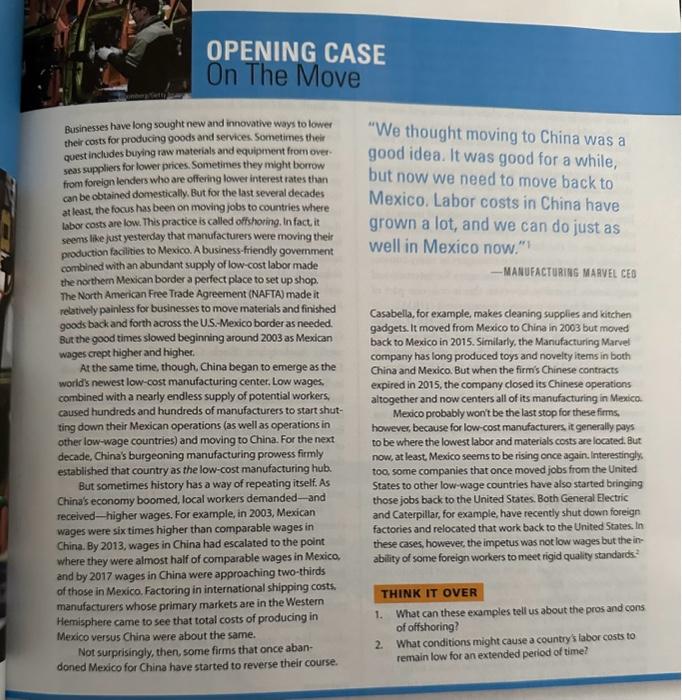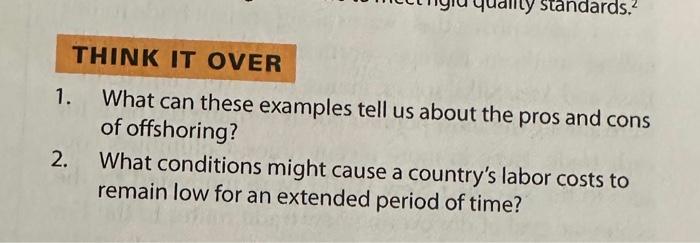Businesses have long sought new and innovative ways to lower their costs for producing goods and services. Sometimes their quest includes buying raw materials and equipment from over"We thought moving to China was a seas suppliers for lower prices. Sometimes they might borrow good idea. It was good for a while, from foreign lenders who are offering lower interest rates than can be obtained domestically. But for the last several decades but now we need to move back to at leust, the focus has been on moving jobs to countries where Mexico. Labor costs in China have labor costs are low. This practice is called offthoring, In fact it stens like just yesterday that manufacturers were moving their grown a lot, and we can do just as production facilties to Mexica. A business-friendly government well in Mexico now." combined with an abundant supply of low-cost labor made the northem Mexican border a perfect place to set up shop. - MAEUFACTURIRS MARVEL CEO The North American Free Trade Agreement (NAFTA) made it relatively painless for businesses to move materials and finished But the good times slowed beginning around 2003 as Mexican._ gadgets. It moved from Mexico to China in 2003 but moved goods back and forth across the U.S.Mexico border as needed. wages crept higher and higher. company has long produced toys and novelty items in both China began to emerge as the - China and Mexico. But when the firm's Chinese contracts world's newest low-cost manufacturing center, Low wages,_ expired in 2015, the company closed its Chinese operations combined with a nearly endless supply of potential workers, altogether and now centers all of its manufacturing in Mexica. caused hundreds and hundreds of manufacturers to start shutMexico probably won't be the last stop for these firms. ting down their Mexican operations (as well as operations in however, because for low-cost manufacturers, it genenally pays other low-wage countries) and moving to China. For the next to be where the lowest labor and materials costs are located. But decade, China's burgeoning manufacturing prowess firmly now, at least Mexico seems to be rising once again. Interestingly. established that country as the low-cost manufacturing hub. too, some companies that once moved jobs from the United But sometimes history has a way of repeating itself. As States to other low-wage countries have also started bringing China's economy boomed, local workers demanded-and those jobs back to the United States. Both General Electric received-higher wages. For example, in 2003, Mexican and Caterpillar, for example, have recently shut down foreign wages were six times higher than comparable wages in factories and relocated that work back to the United States in China. By 2013, wages in China had escalated to the point these cases, however, the impetus was not low wages but the inwhere they were almost half of comparable wages in Mexico._ abiity of some foreign workers to meet rigid quality standards? and by 2017 wages in China were approaching two-thirds of those in Mexico. Factoring in international shipping costs. manufacturers whose primary markets are in the Western Hemisphere came to see that total costs of producing in 1. What can these examples tell us about the pros and cons of offshoring? Mexico versus China were about the same. Not surprisingly, then, some firms that once aban- 2. What conditions might cause a country's labor costs to doned Mexico for China have started to reverse their course. remain low for an extended period of time? 1. What can these examples tell us about the pros and cons of offshoring? 2. What conditions might cause a country's labor costs to remain low for an extended period of time








